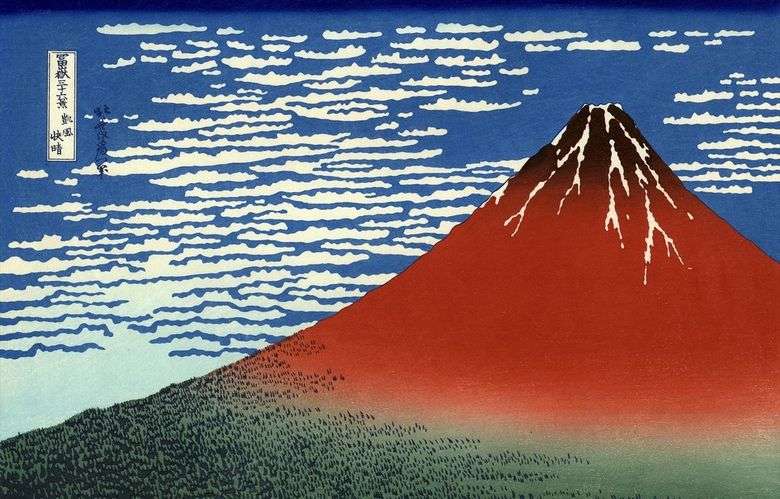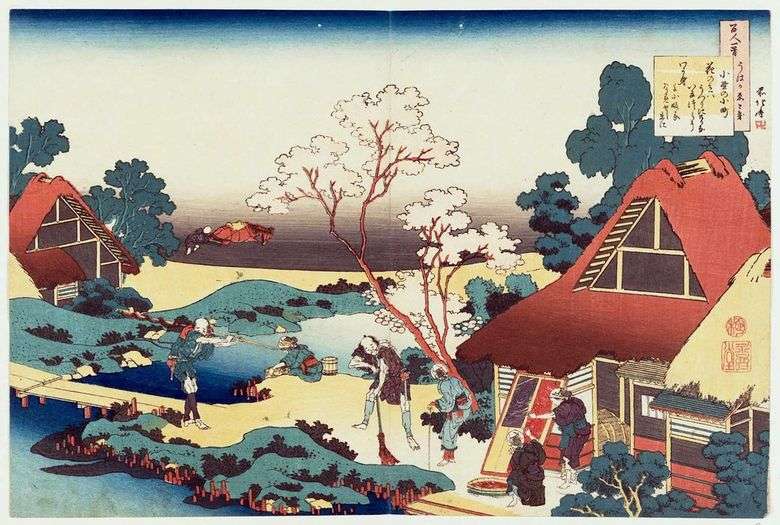
Japanese woodcut is an edged xylograph. Clichés were made for it on the longitudinal section of a pear or cherry tree.
The sketch of the artist was superimposed on the board, and all the lines were cut off from both sides with a sharp knife. At the same time, the smoothness of the pattern of wood fibers could not but affect its linear structure.
Initially, the engraving was monochrome, and all its relatively small circulation was tinted by hand, which gave the works a special charm of immediacy and man-madeness. The early period of the development of engraving dates from 1680-1760.
The first outstanding master was Hishikawa Moronobu. His easel graphics on love-lyrical and genre themes were distinguished by calligraphic expressiveness of lines, glorification of earthly beauty, decorative, emphasized by the desire for color. Most of the works of Hishikawa Moronobu have a horizontal format, akin to the format of the book reversal. With a book they are related and vignettes in the corners of the sheet.
 Viento victorioso, día claro “Fuji rojo” – Katsushika Hokusai
Viento victorioso, día claro “Fuji rojo” – Katsushika Hokusai Vent gagnant, temps clair Fuji rouge – Katsushika Hokusai
Vent gagnant, temps clair Fuji rouge – Katsushika Hokusai The Great Wave in Kanagawa by Katsushika Hokusai
The Great Wave in Kanagawa by Katsushika Hokusai Two beauties by Kitaio Shigamas
Two beauties by Kitaio Shigamas Printed board and modern imprint of the last sheet of the book by Katsushika Hokusai
Printed board and modern imprint of the last sheet of the book by Katsushika Hokusai Poet Ono-no Komati by Katsushika Hokusai
Poet Ono-no Komati by Katsushika Hokusai Poema Ono-no Komati – Katsushika Hokusai
Poema Ono-no Komati – Katsushika Hokusai Poème Ono no Komati – Katsushika Hokusai
Poème Ono no Komati – Katsushika Hokusai